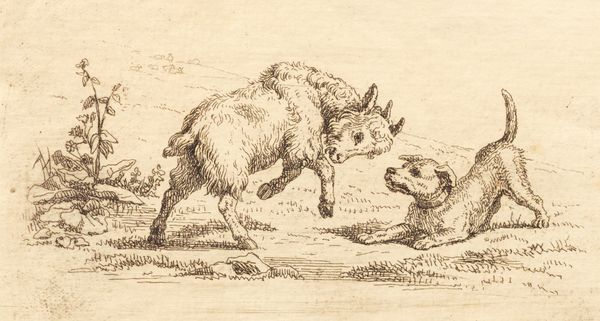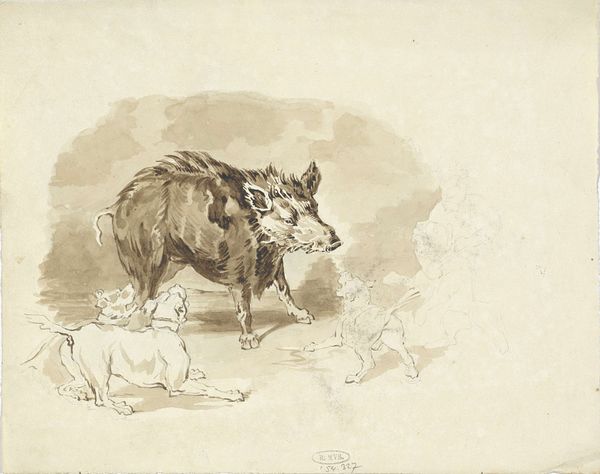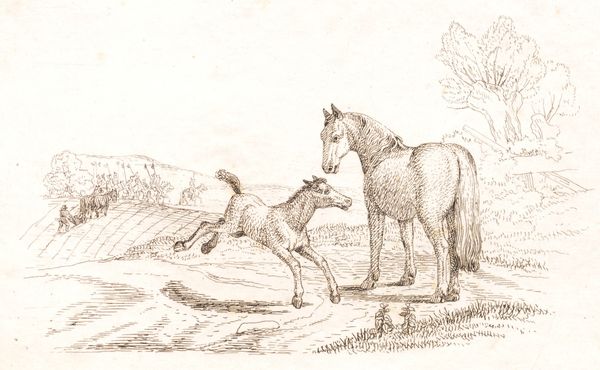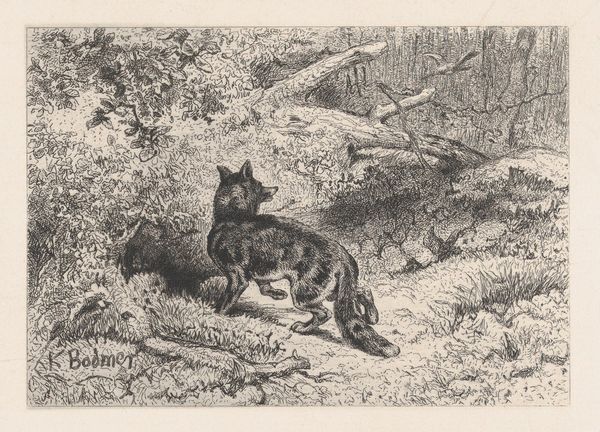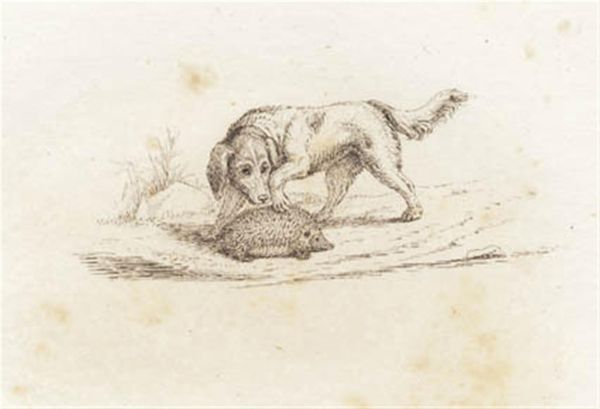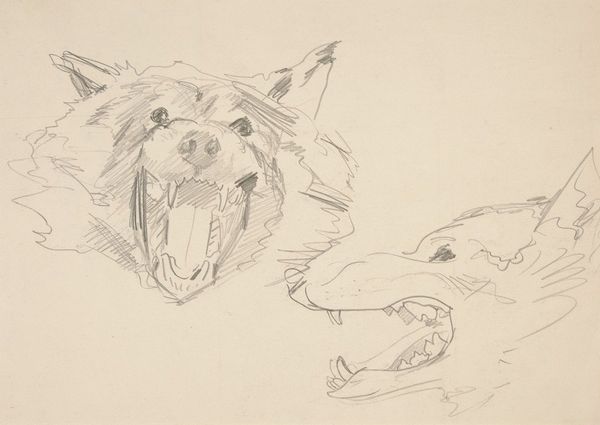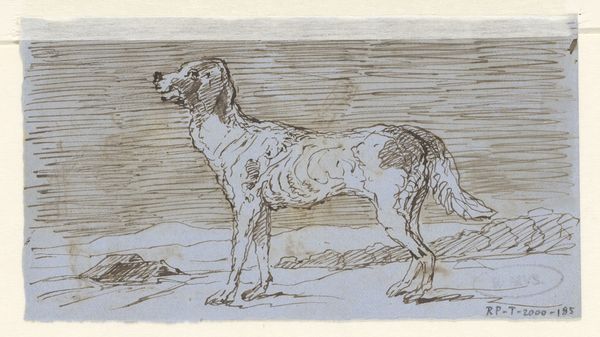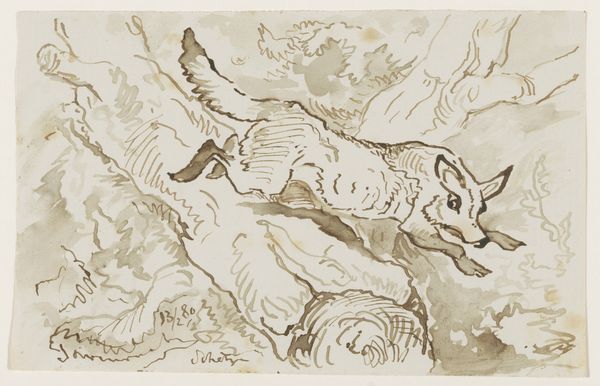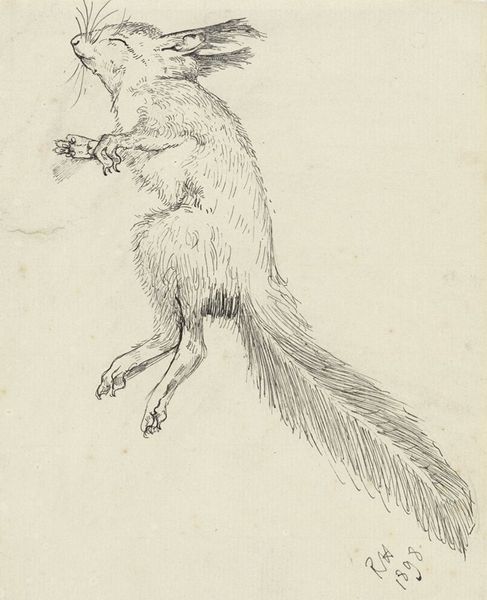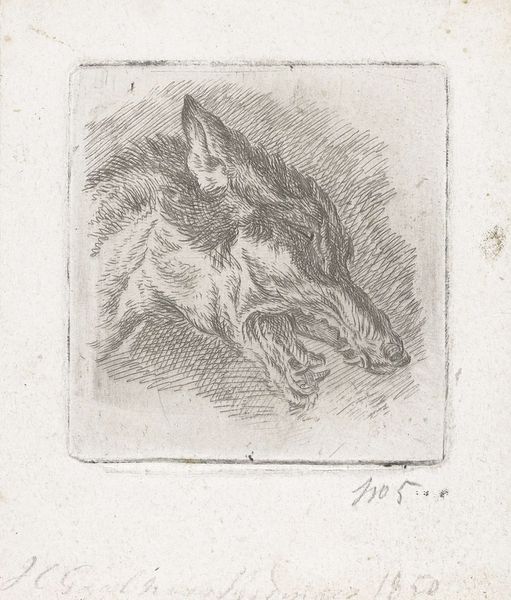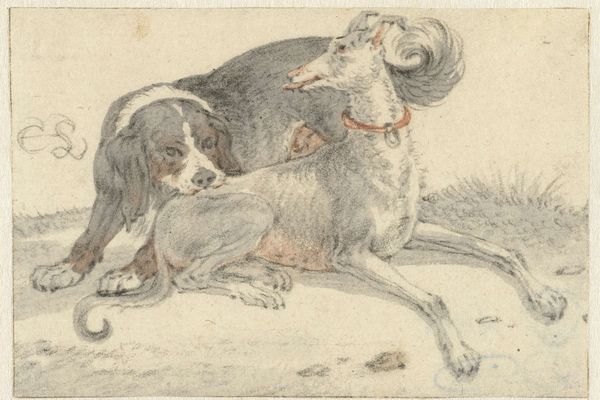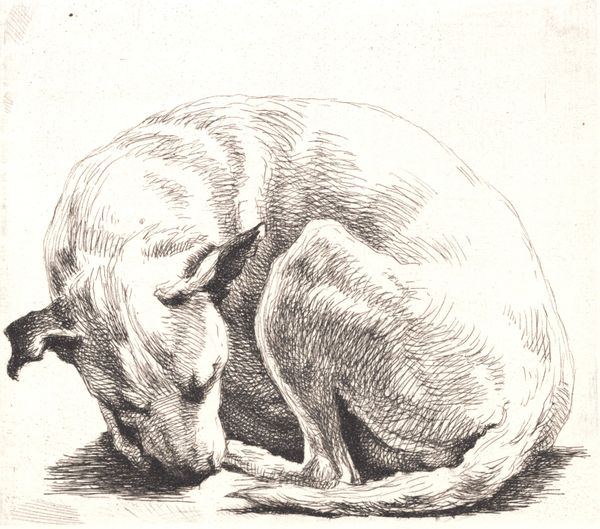
Illustration til "Halvhundrede Fabler for Børn" af Hey 1834
0:00
0:00
drawing, print, ink, engraving
#
drawing
#
narrative-art
#
animal
# print
#
landscape
#
ink
#
line
#
engraving
Dimensions: 87 mm (height) x 114 mm (width) (bladmaal)
Curator: I’m drawn to the simplicity of this engraving, made in 1834 by Martinus Rørbye. It's an illustration for "Half a Hundred Fables for Children" by Hey. There’s a kind of humble beauty in its directness, wouldn't you agree? Editor: Immediately, what strikes me is the texture. You can almost feel the dog's shaggy fur, and the sharp prickliness of the hedgehog, even in these simple lines. The materials used – ink and engraving – speak volumes about reproducibility, accessibility for children, really. Curator: Precisely. Rørbye was deeply invested in conveying everyday life, social dynamics, and education for the youth, a rising concern in Denmark at the time. How might illustrations like this shape a young audience's perceptions? Editor: I think about the labor involved, all that meticulous engraving to create images for a mass audience of children! Were these made affordable? Who profited? This object asks some pretty big questions about production and value. It is, at once, whimsical and really thought-provoking. Curator: And what of the symbolism? The dog's posture – tentative, inquisitive – speaks to the themes within the fables themselves: curiosity, caution, the exploration of the unknown through narrative. It engages the imagination to reflect and create ethical frameworks. Editor: I agree. It gets at this core dialectic in the fables tradition itself. Also the economic reality behind that production interests me – where were these books printed? What was the engraver's compensation? What processes dictated their distribution? These prints didn't materialize from nowhere. Curator: It’s that combination of aesthetic sensibility and engagement with larger cultural and moral conversations that I appreciate. An unassuming illustration opening doors to explore history and pedagogy through art. Editor: Yes, definitely. It makes me reconsider the very notion of "high art." A utilitarian object like this raises fundamental questions about labor, intention, materials, and cultural messaging... and how those influence perceptions in an audience of young, impressionable minds. What a powerful medium indeed.
Comments
No comments
Be the first to comment and join the conversation on the ultimate creative platform.
